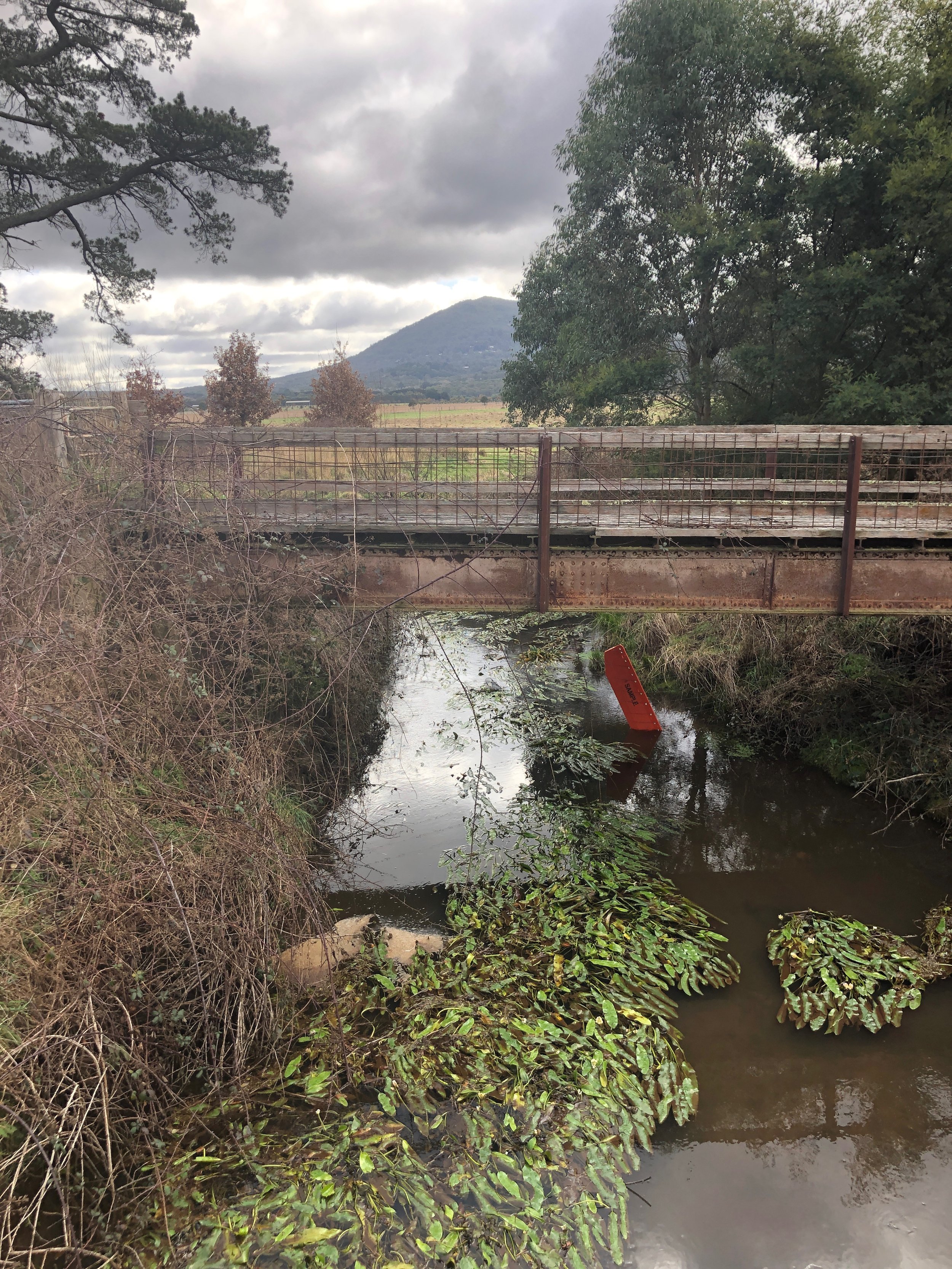
Wildlife and Waterways
A Vision for Mount Macedon
The peaks and folds, forests and fauna of the Mt Macedon district are, for many of us, a presence that wraps around our hearts and our sense of belonging. This place is home. From the often-seen kangaroos, echidnas and wombats, to the elusive powerful owl and brushtail phascogale, the creatures we share this land with bring joy. We might thrill to a pink heath or chocolate lily, many of us have caught a dart of blue wren, or the melancholy cry of the yellow tailed black cockatoos. And we all know the company of trees, be it candlebark, messmate, mountain ash or snow gum.
It is a great privilege to live on or near Mt Macedon, and it comeswith some responsibility - to learn about and care for the plants and places that allow birds, animals and insects to survive. We have this responsibility for our own sakes, and for future generations. Macedon and Mt Macedon Landcare group, established in late 2022, have chosen waterways as a focus, which brings in many other aspects of caring for the environment. It has been a steep learning curve with much more to discover and understand, we hope you’re just a little bit interested in learning more too!
But water can become technical, scientific and bureaucratic very quickly. So, in this introduction we’re trying not to do that. We have however commissioned an environmental consultant, Geordie Scott-Walker, to draft a high level scientific document to provide the know-how and detail we need to be practical and make a difference. That document is the strategy element for this vision, is linked and supports this one.
So on June 19 2025, as near as dam it to the Winter Solstice we have a plan! Not just for how we can celebrate as a community the turning of the dark towards the light, but how we can envision the future of the waterways of the southern slopes on Mt Macedon.
Macedon and Mt Macedon Landcare Group’s have identified 7 stretches of local creek that, when restored, will create linkages for birds, animals and other creatures to move, feed and breed across the mountain so they can thrive. This work will also improve water quality for the whole Maribyrnong River.
We've written a brochure looking at the lay of the land, the challenges and how we can restore this critical aspect of our local environment. This vision needs all of us - the collective. It sits alongside a report we have commissioned from ecologist Geordie Scott-Walker, about the waterways and wildlife of our area. Both will be launched on the night.
This is a unique opportunity for us to create a shared vision for how we can care for the lands, waterways and wildlife we have the privilege to live near. It is a chance for us to connect as a community and build our knowledge and commitment to the place we call home.
There will be three speakers and time for questions and discussion, followed by further conversations over supper.
Some More Why’s and Wherefore’s
Wildlife. From the easily spotted kangaroos, echidnas and wombats, to the elusive powerful owl and brushtale phascogale, wildlife are some of the great joys of our landscape. But they are under increasing pressure from human activity and development, becoming stuck in pockets or islands of land, unable to travel for the food and water, breeding and habitat they need to thrive.
Waterways. The lifeblood not only of a healthy natural environment, but of a healthy Earth, for all of us - animal, plant and human. Mt Macedon hosts the headwaters of the Maribynong River, Melbourne’s second major river. Four creeks flow down the southern slopes of the mountain, much of them stuck behind fences, choked with weeds and randomly sectioned off. They flow into Riddell’s Creek, which flows into Jackson’s creek. Jacksons Creek flows through Sunbury to join Deep Creek, which starts it’s life on the northern slopes of Mt Macedon
Biolink is a new name for what was often called a ‘wildlife corridor’. Biolink is a term that encompasses the need for connection between areas of remnant bush by more than wildlife - plants and platypus, birds and butterflies, also need a diversity of space. Wildlife corridors or biolinks used to be focussed on roads, but waterways offer a much safer and useful option for creating biolinks between areas, with the added advantage of restoring waterways, which has way too many benefits to list here.
So that’s the golden triangle - wildlife, waterways and bio-linking.





